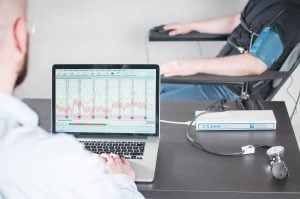For some, this question tends to be a reason for serious research. It is said that our body language can easily display if the things we are saying are true or not. Before you subject anybody to a polygraph test you obviously want to be sure whether your suspicions about given lies are true or not.
Of course it is hardly ever possible to be 100% sure, but just careful observations of a couple of aspects can give you vital clues and can help you make the right decisions. One of the easiest ways of classifying whether someone is lying is to observe their breathing.
Lying in general is a stressful action and therefore the body may react to such feelings by taking shorter and more nervous breaths. But that can also happen to patients with respiratory issues, which means, that breathing cannot be the only way to check someone’s honesty. Other methods refer to perceptive observations of the suspects behaviour. It is said that liars have a very specific way of behaving which can easily give them away.
For instance, when lying, some people involuntarily tilt their heads or generally makes unusually moves with it. Liars also tend to repeat information without the need as also give much more information that is actually need. While doing this some will cover their mouths, while others will protect vulnerable parts of their bodies. Most liars usually also have the difficulty with speaking and are often easily disturbed. It is also common for them to point at things or shuffle their feet. But the most deceptive part of a humans body can be the eye. Sometimes just a quick but thorough look into somebody’s eyes can give us the confirmation that we are actually dealing with a lie. Persons guilty of not telling the truth often have very irregular blinking while lying. And it is because of this that our eyes can give a liar away so easily. But all of the above aspects are just ways we can use for ourselves to make a basic verification of our suspicions.
To really find the truth out, professional equipment is needed such a polygraph. So how does the examiner know if the person questioned is lying or not?
The answer may appear to be pretty simple. Modern lie detectors monitor many different parameters of our body starting with the basic blood pressure and pulse ending with skin electrical resistance. Information collected by the device is then sent to the computer which produces a result which is then possible to be interpreted by the examiner. During the interrogation, apart from asking questions, the examiner is responsible for closely observing the person questioned and searching for signs of behaviour which could be similar to the ones described above. The way the subject behaves while answering questions, gives the examiner a first impression on what the results of the test can be. It is well known that lying is a stressful action.
When exposed to stress our body can react in all kinds of different ways, sometimes in ways which are absolutely uncontrollable by us. The first sign that somebody is lying is the growth of pulse and blood pressure. This is a typical reaction to stress, which in this case is caused by lying. Another syndrome confirming the instance of lying can be sweat. This is also closely connected with stress. When exposed to stress, some people react by extensive sweating. That is why monitoring this aspect is so vital during a lie detection test. One of the most interesting ways of verifying someone’s truthfulness is monitoring his or hers skin electrical resistance. Research has shown that people who lie suffer a large drop in skin electrical resistance. The first invention that would monitor this was the psycho galvanometer. The appearance of such an invention only rose the accuracy of polygraph tests and caused enormous interest when first used.
The aspect that makes this parameter so interesting is the fact that it is practically uncontrollable by us. Because seriously, how can anyone control their own electrical resistance? It’s impossible! That is why this part of the polygraph is so important and helps examiners to produce very accurate results. This connected with the examiners observations during the interrogation can give an accuracy of up to 90%.


